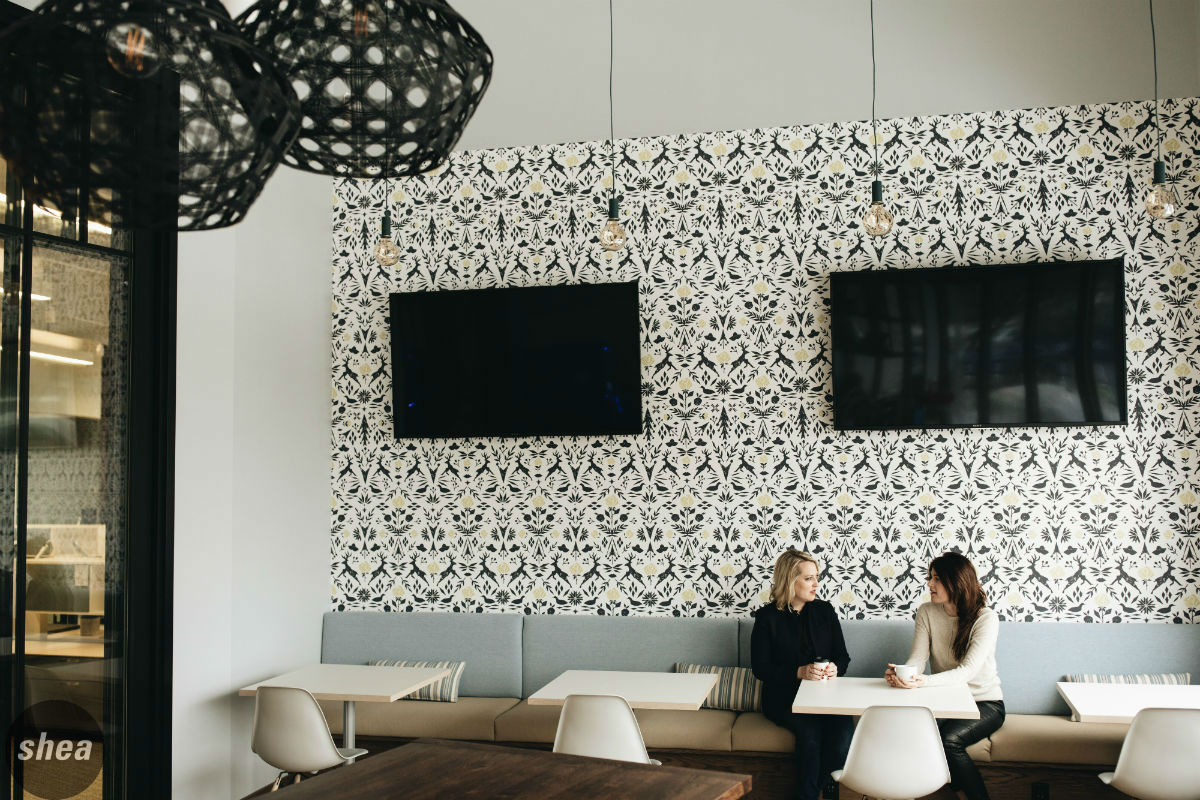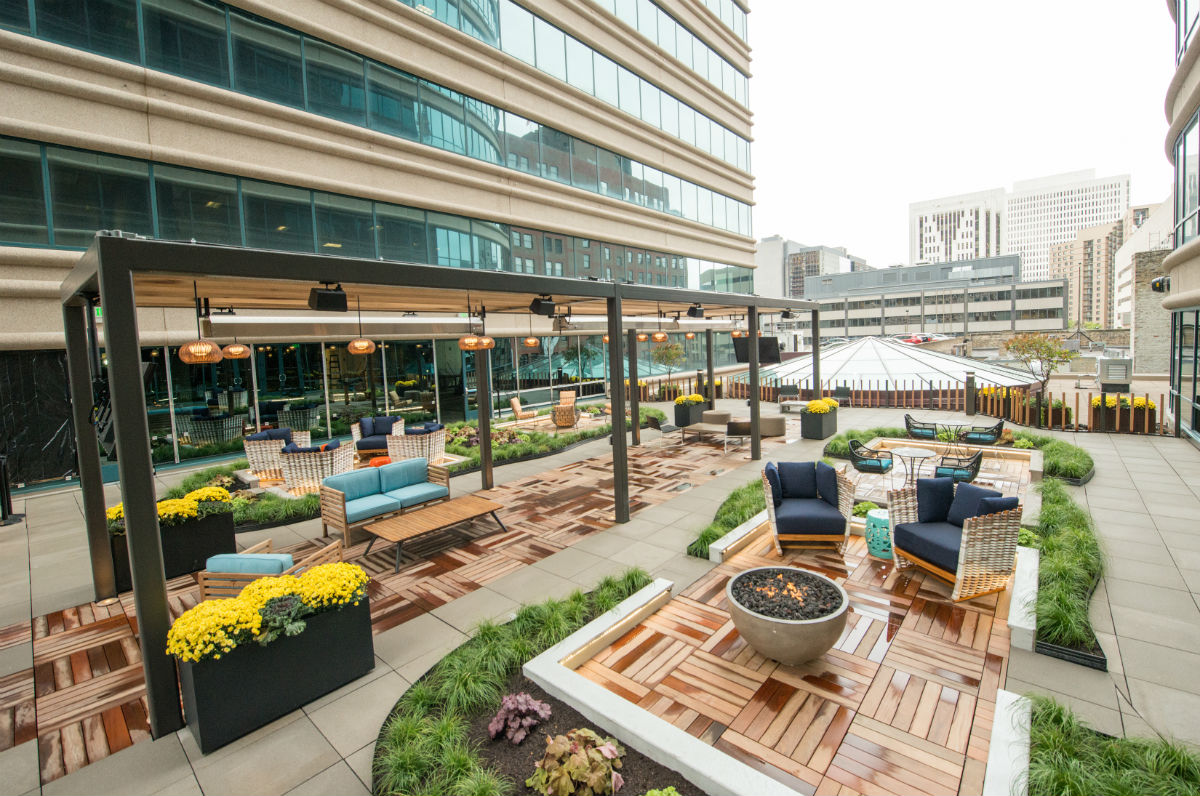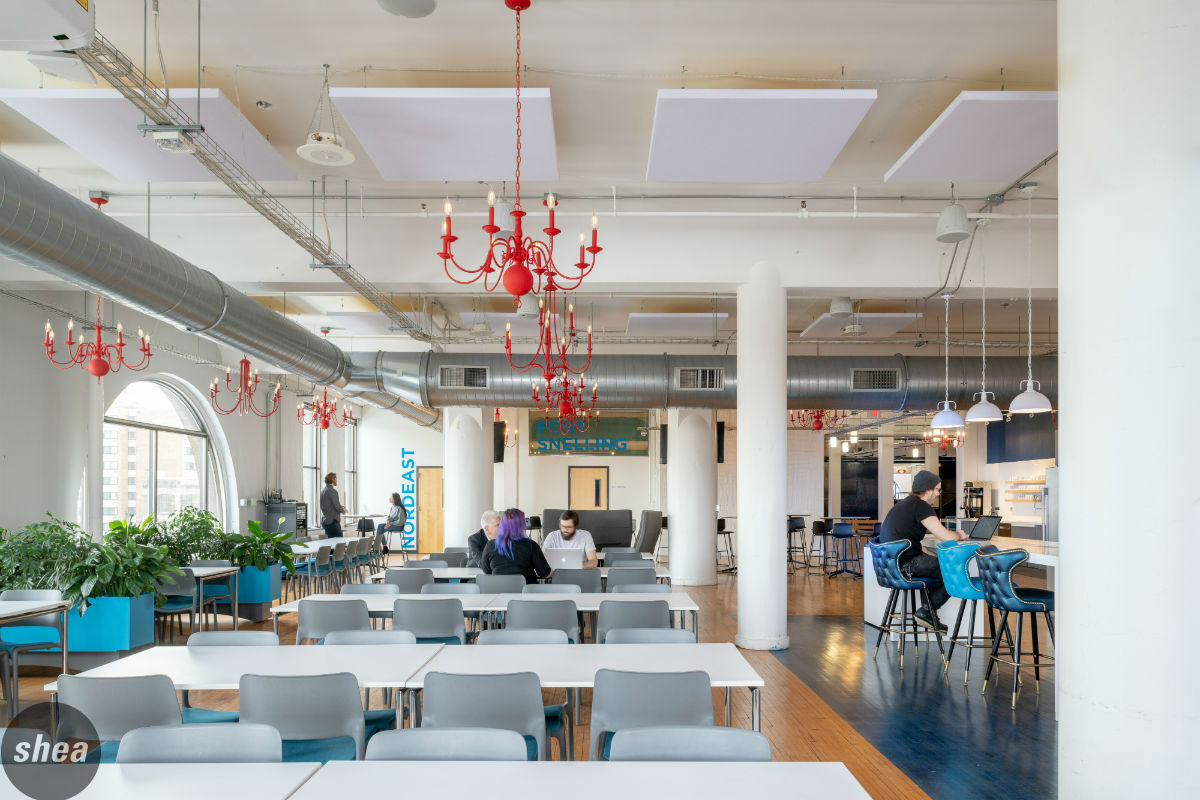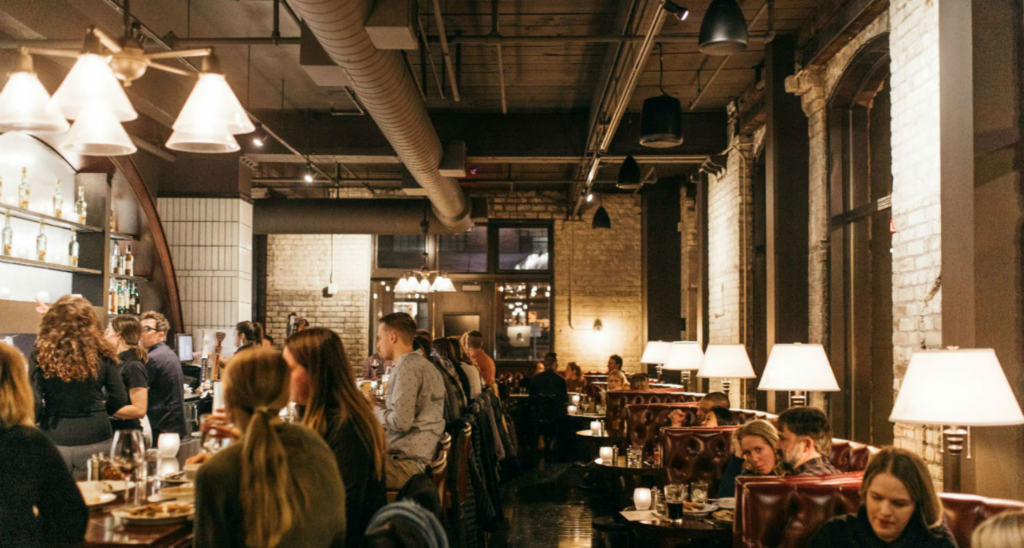We’re calling it now: The office isn’t going anywhere. Sure, the way we work has changed dramatically over the past two years—but it’s just an acceleration of the direction we’ve been headed in. There’s no one-size-fits-all trend or solution that’s going to work moving forward, but we can’t lose sight of the idea that the office is more than just a space: It’s an information hub, a center, a foundation. A place to spark ideas, collaborate, and build a business. And we need to maintain that base, no matter what type of company we are.
The good news is that, as leaders in the design industry, we’ve fast-tracked learning a few things that will be beneficial in the long term:
- Employee engagement is critical. Even in the heyday of the old office model, we’d lost sight of how to best engage one-on-one and as teams.
- We can all get by with less space by creating more efficiency.
- De-cluttering and keeping things clean needs to be an ongoing exercise.
A well-considered space is paramount to this new notion of the office, and Shea’s long been ahead of the curve when it comes to creating workplaces that best work for our clients. So we’re here to break down the buzzwords, the “trends,” and the notions about the next generation of workspaces, and where the office is headed next.
The Hype on Hybrid
We can’t talk about the next generation of offices without addressing the hybrid issue. Every office is approaching this notion differently—whether it’s having employees in all together on dedicated days, letting them set schedules that work for them, or moving to primarily remote status.
 Overall, the reality and future of hybrid models will create a shift in how much physical space companies truly need moving forward. Because there will forever be client and team meetings that need to happen in person, brainstorming that works best when ideas can be bounced easily, and the need for a quiet, dedicated spot to crush a to-do list. And this means reimaging offices to serve the purposes that each of our clients needs. Some are reconfiguring their current spaces to put a stronger emphasis on collaborative areas, rededicating former individual desk spaces to open brainstorming areas for a community-led feel. Other employers need individual booths and spots for workers to take video calls with clients and coworkers, or to have a totally dedicated work spot (see: the rise of the workplace phone booth). It’s all about creating options. The balance of “me and we” spaces at the Marvin Windows and Doors office is a prime example of a variety of areas that serve employees for what they best need that day—whether it’s an individual desk space, a comfortable lounge for an informal meeting, or a get-it-done quiet area.
Overall, the reality and future of hybrid models will create a shift in how much physical space companies truly need moving forward. Because there will forever be client and team meetings that need to happen in person, brainstorming that works best when ideas can be bounced easily, and the need for a quiet, dedicated spot to crush a to-do list. And this means reimaging offices to serve the purposes that each of our clients needs. Some are reconfiguring their current spaces to put a stronger emphasis on collaborative areas, rededicating former individual desk spaces to open brainstorming areas for a community-led feel. Other employers need individual booths and spots for workers to take video calls with clients and coworkers, or to have a totally dedicated work spot (see: the rise of the workplace phone booth). It’s all about creating options. The balance of “me and we” spaces at the Marvin Windows and Doors office is a prime example of a variety of areas that serve employees for what they best need that day—whether it’s an individual desk space, a comfortable lounge for an informal meeting, or a get-it-done quiet area.
Employees First
Forget the ping-pong tables and built-in kegs of the early aughts; offices are turning to employee-centric amenities to give their workers a reason to brave the commute. And in 2022, this means a focus on balance and wellbeing. Shea was an early adopter of this notion, with the Fifth Street Towers project including “escape spaces” on its amenity floors for office-tower workers to catch a breath and rebalance—whether that means a break in one of the nap pods, or a trip to the welcoming rooftop to soak in some sunshine.
Offices are overloading on amenities to lure workers back, and it’s up to designers to incorporate these new facets of the workplace seamlessly. Outdoor terraces and rooftop gardens are no-brainers, but where are people supposed to sit? How are they protected from the elements? Can they be created as all-season spaces? Are there power outlets incorporated so employees can enjoy the benefits of nature while working? Bringing in a wellness room and gym is a great idea to help employees streamline their new routines, but have showers, soundproofing, airflow, and storage been adequately considered? And most of all—what are employees really looking for in a workspace that will get them excited about the office again? Design firms like Shea have experience in change-management planning to make employees feel heard, valued, and included in the design decisions that will affect them every day.
A Natural Fit
In addition to outdoor spaces that give workers constant access to the elements, company leadership and employees alike are looking to bring a little more nature into their lives. Adding a few potted plants isn’t enough; natural installations and elements really need to be woven into the feel of the space in ways that make sense for the organization.
Some companies are turning to nature in the most extreme sense, moving their offices and headquarters out of cities and into suburban areas that have a stronger connection to the outdoors (and often include easier commutes for employees). Taking advantage of the nearby nature is key to making this strategy work, as Shea has done at Normandale Lake by creating clear sightlines and easy access to the surrounding water. Even in more city-centric areas, organic shapes, with furniture incorporating more curves and circular areas to encourage better collaboration, are taking over, bringing a softer sense to even the most hard-edged corporate offices. Drawing in as much natural light to keep spaces bright and employees balanced is huge. Living walls and more natural materials (think the use of wood over steel and warm vibes over an industrial feel) put workers and visitors alike at ease.
A Curated Culture
The idea of employee engagement is the one learning not to lose sight of. Perhaps more than anything, offices are embracing authenticity to re-engage their people. Creating a company culture is a constant evolution, but space can be used to reinforce a corporate ethos, showing what’s important to an organization and its workers. Employees are looking to be heard, appreciated, and given a change to live up to their potential. Companies can achieve this by listening and giving opportunities for feedback—with work/life balance and mental health at the forefront of the workplace conversation, the office space itself must support that overall focus in every element.
Flexible designs with spaces for all types of work show that a company understands that every day isn’t the same for employees. Bringing in brand elements and local touches in clever ways, as Shea did in our design of the 10 Missions Media office, reinforces a company’s identity and ties to the community. It’s not just about painting brand colors and sticking logos on the walls; it’s about incorporating the entire spirit of a company through its space—maybe adding in whimsical light fixtures as a nod to the firm’s creativity, or ultra-luxe furniture in a waiting area to show that clients are at the heart of the business. Shea’s experience in branding and creating spaces that hit on every experiential touchpoint is exactly what’s needed in bringing this sense of authenticity to life.





